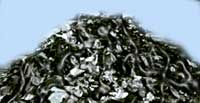Sweeping Debris Disposal

Sweeping Debris Disposal |
 |
Trash Screening - Are Sweepings Toxic?by Eric McGee, Senior Environmental Health Specialist for the Washington County Public Health Department, reports on lab findingsAs a follow-up to our trash sifting article, this interview is with Eric McGee, who is Senior Environmental Health Specialist for the Washington County Department of Public Health in Stillwater, Minnesota. His department is mandated to manage and regulate that area's solid waste, including street sweepings. For some time, McGee has been assessing the litter picked up by sweepers in his area, and has been involved in testing it for toxicity content. In Washington County, Minnesota, the disposition of sweepings is considered an environmental/public health function, and so falls under the purview of our department. As a result, we have had some lab analyses done which show us that typical sweepings are most likely not a hazardous waste, although what we find may depend on whether the sweepings came from a street, parking lot, etc. We've looked at sweepings for lead, benzene, chlorides, and a few other items, and are comfortable with calling it a 'solid waste.' Under the currently accepted definition, we appropriately regulate the material. The Department puts street sweepings into a very low level regulatory category, so we can work with either the city or the private operator to come up with an agreed-upon management system. This is usually anything in lieu of disposing of it in a wetland or ravine or other land disposal. What we're recommending in most cases is screening to remove trash and whatever else that can be removed. Then we allow it to be utilized as road core, road base, as a base fill for parks, baseball fields, etc. One need in this area is a consistent and mutually agreeable direction from federal and state agencies regarding the management of sweeping debris. We try to use the least amount of regulation that will still protect public health and the environment. I think more information on characteristics and acceptable management methods would be beneficial. Someone, whether public, private or sweeper association, needs to put some time and effort into collecting data on the composition of sweepings. I'd be interested in seeing it, and I'm sure a lot of other people would be, too. Perhaps, with leadership from the sweeping industry there can be forward movement on this issue to determine what should be done in the long-run to minimize the landfill impact of sweepings, find sensible uses for sweeper-collected dirt, and still protect our citizens. This article is reprinted from American Sweeper magazine, v3n1 1992. |
© 2005 - 2019 World Sweeper
|
Sweeping Disposal Contents
|